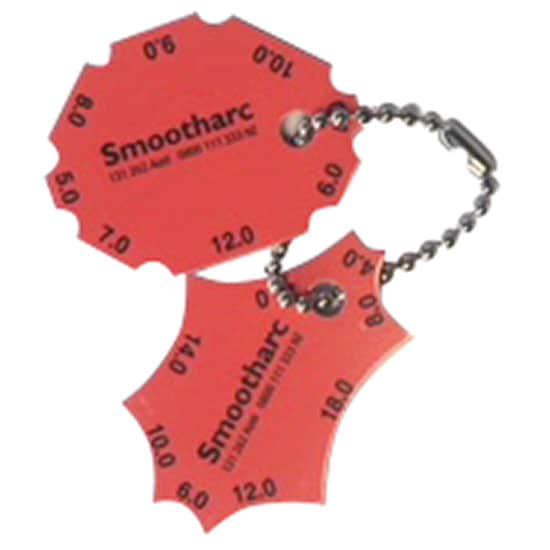The Ultimate Guide to Fillet Weld Top Quality Control: Making Sure Stamina and Toughness in Your Welded Joints
In the realm of welding, ensuring the strength and resilience of fillet welds is critical for the stability of welded joints. As we begin on this exploration of fillet weld quality control, we will certainly reveal important factors that influence weld strength, dive into effective assessment approaches, and go over techniques for protecting against typical weld issues.
Relevance of Fillet Weld Quality Assurance
Making sure appropriate fillet weld high quality control is critical in guaranteeing the architectural honesty and durability of welded components in numerous markets. Fillet welds are commonly used in structural steelwork, bridges, pressure vessels, pipelines, and other essential infrastructure where the strength of the weld is crucial to total safety and security and performance. Quality control measures such as aesthetic examinations, non-destructive screening, and adherence to welding treatments assist identify potential defects like absence of blend, insufficient infiltration, undercutting, or excessive support.
Key Variables Affecting Weld Toughness
Attaining optimal weld strength needs careful factor to consider of different vital aspects that influence the stability and sturdiness of the welded joint. The first vital variable is correct joint preparation, which entails cleaning the base steels to get rid of any pollutants that can deteriorate the weld. Additionally, the fit-up of the joint is important to guarantee proper infiltration and blend of the filler material.
The option of the suitable welding method and parameters likewise plays a substantial role in figuring out weld strength. Elements such as warmth input, travel speed, and electrode angle can influence the quality of the weld. Maintaining the right interpass temperature level throughout multi-pass welding is important to stop splitting and ensure a strong bond between the layers.
Furthermore, the choice of filler material and its compatibility with the base metals is vital for attaining high weld strength. Utilizing filler material with the proper mechanical properties can enhance the overall integrity of the weld. Finally, post-weld warm therapy and correct examination strategies are essential steps in making sure the strength and sturdiness of the welded joint.
Assessment Methods for Weld Honesty

An additional vital evaluation approach is liquid penetrant testing, where a liquid dye is put on the weld surface area - Gauge Fillet Weld. The color seeps into any kind of surface-breaking issues, making them visible under UV light. This method is reliable for identifying flaws that might not be visible to the nude eye


Ultrasonic screening is additionally commonly made use of for examining weld stability. High-frequency acoustic wave are directed into the weld, and any kind of disturbances in the sound wave pattern show potential problems like fractures or lack of fusion.
These examination methods play a crucial role in ensuring the top quality and integrity of welds, inevitably adding to the general toughness and resilience of welded joints in commercial setups.
Avoiding Usual Weld Problems
In order to preserve the architectural stability view website of welded joints in industrial applications, it is crucial to carry out safety nets to deal with common weld flaws. One common problem is lack of combination, where the filler material stops working important site to bond adequately with the base metals, resulting in weak areas in the weld. This can be protected against by making sure correct warmth control and using the correct welding technique.
One more frequent issue is porosity, triggered by gas entrapment in the weld metal throughout the welding procedure. To stop this, it is vital to clean the base steels extensively, make use of completely dry electrodes, and preserve an ideal welding environment with proper air flow.
Additionally, cracks in welds can jeopardize the joint's strength. To avoid this issue, it is very important to manage the air conditioning price after welding, make use of preheating when required, and select appropriate welding parameters.
Enhancing Weld Longevity With Appropriate Strategies
One critical approach to boost weld resilience is to guarantee proper weld bead positioning. By positioning the weld bead accurately within the joint, the weld's stamina and resistance to exhaustion can be considerably improved.
Choosing the best filler steel and making certain the cleanliness of the base metals can prevent incorporations and other issues that can endanger the weld's toughness. By carrying out these correct methods, welders can guarantee that their bonded joints show outstanding stamina and sturdiness, fulfilling the highest possible high quality criteria.
Conclusion
Finally, preserving high quality control criteria for fillet welds is crucial for ensuring the strength and resilience of welded joints. By recognizing the key variables impacting weld stamina, using assessment methods for weld stability, avoiding usual weld issues, and employing proper methods, welders can improve the general longevity of their welds. It is imperative to prioritize quality control procedures to produce lasting and trustworthy bonded joints.
In the world of welding, making certain the stamina and sturdiness of fillet welds is vital for the honesty of welded joints. As we get started on this expedition of fillet weld top quality control, we will certainly discover important elements that affect weld strength, delve right into efficient assessment techniques, and review strategies for stopping usual weld defects.Accomplishing ideal weld strength calls for careful consideration of different vital aspects that influence the honesty and longevity of the welded joint (Gauge Fillet Weld).In conclusion, keeping high quality control requirements for fillet basics welds is vital for ensuring the stamina and longevity of welded joints. By comprehending the key elements affecting weld stamina, making use of evaluation methods for weld stability, avoiding typical weld defects, and employing appropriate methods, welders can enhance the overall resilience of their welds
Comments on “Comprehending Gauge Fillet Weld: A Comprehensive Guide for Welders”